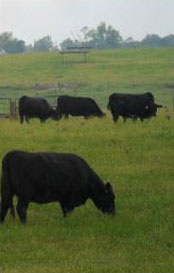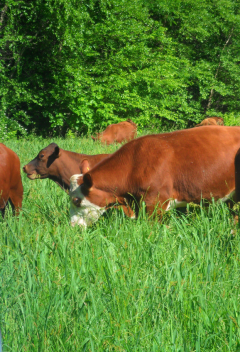Purchasing Quality Seed

It’s time for those planning on seeding pastures or hayfields this spring to begin preparing. Whether renovating pastures, converting cropland into pasture, establishing a new species into an existing stand, or reestablishing winter feeding areas and other high traffic areas, it is important to purchase high quality seed to get the best results. Seed is one of the cheapest inputs and is the basic building block to a good forage stand.
Before purchasing seed, the ideal forage species and variety for the land and operation needs to be determined. This should reflect nutrient requirements, management, climate, soil type, and location. It is vital to use a variety that is adapted to the area. See the University of Kentucky Forage Variety Trials or talk to your county agent for information regarding varieties. Once a variety has been decided on, the seed can be purchased. In order to produce a healthy stand, the seed needs to be capable of germinating and producing healthy plants.
All agricultural seed is required to be labeled. One must read these labels to ensure they are purchasing high quality seed. Although there may be minor alterations, seed labels usually consist of:
- Variety and Kind – Cultivar/release name, species, and common name
- Lot number
- Origin
- Net weight
- Percent pure seed (purity)
- Percent inert matter
- Percent other crop seeds
- Percent weed seeds
- Name of restricted noxious seed and number per pound of seed
- Percent germination – how much of the seed will germinate readily
- Hard seed – seed which does not germinate readily because of a hard seed coat
- Dormant seed – seed which does not germinate readily because it requires a pre-treatment or weathering in the soil. (Some suppliers may combine hard and dormant seed on the label.)
- Germination test date – date should be within 12 months of the planned seeding
- Name and address of company responsible for analysis (seller or grower)

While it is important to consider all of these, it is especially important to note purity and germination. Purchasing seed with high purity levels means low levels of unwanted crop seed, weed seed, and inert matter. Percent germination is derived from tests done in the lab which assess the ability of the seed to produce a healthy plant when placed under favorable conditions. It is also important to consider other factors such as vigor of seed, hard or dormant seed, and seed size.
Higher quality seed comes at a higher price. This seed’s ability to produce a higher yield and to increase longevity of the stand should counteract that cost. Seed with high purity will reduce unwanted weed seeds and can reduce future herbicide costs. Seed with high germination percentages will produce a thicker, higher yielding stand.
When purchasing seed, there are several ways to ensure that the seed is of high quality. First, only purchase seed from a reputable dealer. It is beneficial to ask questions on how the seed is produced, conditioned, and stored, which can all greatly affect seed quality. Purchasing certified seed is recommended to guarantee quality.
Certified seed is seed of a known variety that is produced under strict seed certification standards to maintain varietal purity. Seed lots have specific standards for purity and germination percentages. Certified seed is guaranteed to be free of noxious weeds and must pass field inspections and laboratory testing. Seed may only be conditioned by an approved seed conditioning plant. Certified seed is guaranteed to be high quality seed.
Poor quality seed is never a bargain as it will usually produce a lower yielding crop with reduced longevity. Purchasing seed that is contaminated with other crop seed, weed seed, and inert matter is wasting money and can increase herbicide needs and costs. Seed is one of the cheapest but most important inputs to produce a thick, healthy forage stand.
Categories:
General
Establishment/Renovation


